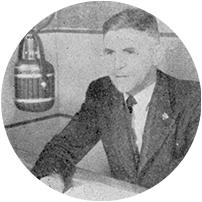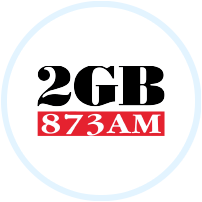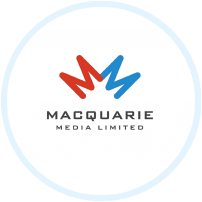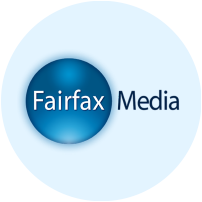
Sometimes it's good to look back to move forwards
While our brand has a long history, we also continue to make history as Australia’s largest locally owned media company, following our merger with Fairfax Media in December 2018, and our merger with Macquarie Media in November 2019. Both mergers brought operational diversity, but more importantly, placed us in a unique and competitive position in Australia. To understand who we are today, we must take a look at our history to see how we came about.
History In Television
1950s
Nine’s proud history dates back to the 1950s when it was originally called TCN-9. The station launched in September 1956, broadcasting Australia’s first ever program: This Is Television.
1960s
TCN-9 was owned by Australian Consolidated Press and established by Frank Packer. In 1960, ACP purchased GTV-9 Melbourne to form the first TV network in Australia – the National Television Network, which later became the National Nine Network.
1980s
In 1987, Kerry Packer sold the Nine Network to Alan Bond, who expanded the network to include QTQ-9 Brisbane and STW-9 Perth.
1990s
Publishing and Broadcasting Limited was formed in 1994 when Nine Network Australia merged with Australian Consolidated Press.
2006 - 2010
James Packer announced the sell-off of 50 per cent of PBL’s media interests – including the Nine Network and its 50 per cent interest in NineMSN. In the following year, 2008, Packer and Consolidated Media Holdings quit the board of PBL Media, effectively ending financial backing of the company.
2013 - 2014
In 2013, Microsoft sold its stake in the Ninemsn venture to Nine Entertainment, with the Ninemsn website rebranding to Nine.com.au. In 2014, a joint venture between Nine and Fairfax launched Stan.
PBL Media rebranded as Nine Entertainment Company, and in December 2013 the company listed on the ASX as NEC.
2018
In December 2018, Nine Entertainment and Fairfax Media merged, forming Australia’s largest media company, spanning brands across television, video on demand, print, digital and radio.
History In Publishing
1800s
The first edition of the four-page weekly Sydney Herald was published in April 1831.
In 1841, John Fairfax purchased The Sydney Herald from Frederick Stokes. In August 1842 it was renamed The Sydney Morning Herald.
In 1854, the first edition of The Age was published, and the newspaper was sold in 1856 to Ebenezer Syme and James McEwan. Ebenezer’s brother David Syme ran The Age both editorially and commercially and became sole proprietor in 1891 until his death in 1908.
In 1856, John Fairfax & Sons was established when John Fairfax took his son, James Reading Fairfax, into partnership with himself and eldest son Charles.
In 1948, Syme’s last surviving son, Oswald, floated David Syme & Co. as a public company.
1950s - 1960s
In 1951, John Fairfax & Sons launched The Australian Financial Review as a weekly newspaper. In 1961 it became bi-weekly and by 1963 it was daily.
1980s
In 1983, John Fairfax & Sons acquired David Syme & Co. and The Age.
1990s
The Fairfax family controlled the company until 1990 when it went into receivership. Warwick Geoffrey Oswald Fairfax, “Young Warwick”, bought out his family’s holdings in the company in 1987. His method of financing and subsequent issues within the company saw it collapse in late 1990 and receivers appointed.
In 1991, Conrad Black and Kerry Packer joined with others in the Tourang consortium to take control of Fairfax. Packer later dropped out and Black acquired 15 per cent.
In 1992, Fairfax floated on the stock exchange. In subsequent years, Black, Packer and News Limited lifted their stakes in, and exited, the company.
2000s
In 2003, Fairfax acquired the New Zealand publishing business now known as Stuff.
In 2007, Fairfax merged with Rural Press and acquired the radio and video assets of Southern Cross Broadcasting.
2015
Stan launched as a 50:50 joint venture between Nine and Fairfax.
2018
Nine and Fairfax merged.
History In Radio
1925
2UE broadcasts for the first time on January 26. The founder of Electrical Utilities and 2EU/2UE was Cecil “Pa” Stevenson, who was also 2UE’s chief engineer and one of the most prominent personalities in Australia’s early broadcasting history. Prior to opening 2UE he had operated experimental station 2IY, as well as working alongside a couple of other early experimenters.
1926
2GB does its first broadcast on August 23. The first operator was the Theosophical Broadcasting Station Pty Ltd, owned by interests associated with the local branch of Theosophical Society Adyar, which was given the right to broadcast in the Sydney area.
1930s
4BC begins broadcasting on August 16. 4BC was founded by businessman John Beals Chandler in 1930. Owner of the electrical appliance business Chandlers, he wanted the station to drive demand for his radio sets.
1931
6PR broadcasts for the first time on October 14. 6PR was founded by the electrical and music warehouse company Nicholson’s Limited, which operated the station from a studio above its music showroom in Perth. The signal was broadcast from the Applecross Wireless Station. In October 1939, its first relay station 6TZ came on air at Waterloo, 108 miles from Perth, using overhead landlines. This station generated its own power, so the on-site technicians had to be familiar with diesel-power generating plants.
1932
3AW broadcasts for the first time on February 22. 3AW was created when a company formed by Allans, J.C. Williamson and David Syme (then publishers of The Age newspaper) was granted a radio broadcasting licence. The AW in 3AW comes from the names of the part-owners, Allans and J. C. Williamson.
1936
2GB and 2UE form the Broadcasting Services Associations (BSA) alliance.
1938
Sir Hugh Denison registers the Macquarie Radio Network (MRN).
Affiliated stations in the new network were 2CA Canberra; 2GB and 2UE Sydney; 2WL South Coast; 2HR Hunter River; 3AW Melbourne; 3HA Hamilton; 3TR Sale; 3SH Swan Hill; 4BH Brisbane; 5DN Adelaide; 5RM Renmark; 6PR Perth; 6KG Kalgoorlie, and a host of regional stations.
1941
Macquarie opens new premises in Phillip Street, Sydney, consisting of five independent studios and control booths, a master control room modelled on that used by NBC Radio City, a deluxe 300-seat auditorium including a glass soundproof booth for sponsors to observe proceedings, and a smaller 50-seat theatre. These facilities were far better than those at other stations.
1944
Macquarie National News commences.
1945 - 1949
In April, Macquarie Network enters into an agreement with The Sydney Morning Herald for the provision of, initially, three daily bulletins. A small studio was erected at the Herald and three journalists wrote the scripts. The Macquarie news service launched in May.
In 1949, actual voices of eyewitnesses and others who were in the news were used.
1960s
In the early 1960s, Macquarie further committed to talk radio and edged away from music, despite regulatory restrictions on the use of telephones in broadcasting.
From June 1964, 2GB featured talk programs from 9am to 4pm.
In 1949, actual voices of eyewitnesses and others who were in the news were used.
1973
The 50th anniversary of broadcasting in Australia. Macquarie had the following affiliates: 2GB Sydney; 2CA Canberra; 2PK Parkes; 2WL Wollongong; 3AW Melbourne; 4BH Brisbane; 4BU Bundaberg; 4GY Gympie; 5DN Adelaide; 6IX Perth; 6BY Bunbury; 6MD Merredin; 6WB Katanning; 7HO Hobart.
1980s
In 1980, Macquarie Media Syndication (MMS) is established.
The Lamb family sold 2UE to Kerry Packer, but the Nine Network was later forced to sell the station to comply with cross-media ownership provisions of the Broadcasting Act.
By the late 1980s, Macquarie had become Australia’s only national commercial radio network.
In 1949, actual voices of eyewitnesses and others who were in the news were used.
1990s
2UE was the dominant station in Sydney throughout the decade, through to the 2000 Olympics and into the early 2000s. This signalled the start of the News Talk format across 2UE, 3AW, 4BC and 6PR.
In 1949, actual voices of eyewitnesses and others who were in the news were used.
2002
Leading Sydney breakfast broadcaster Alan Jones switches from 2UE to 2GB, helping to take the station to No. 1 in Sydney and changing the fortunes of Macquarie which had been struggling for a number of years.
In 1949, actual voices of eyewitnesses and others who were in the news were used.
2005
Macquarie Radio Network is officially listed on the ASX.
In 1949, actual voices of eyewitnesses and others who were in the news were used.
2007
Fairfax Media buys Southern Cross Broadcasting talk stations 2UE, 3AW, 4BC and 6PR, creating the Fairfax Radio Network.
In 1949, actual voices of eyewitnesses and others who were in the news were used.
2011
Macquarie acquires the Smart Radio Network, encompassing the following stations as part of Macquarie Regional Radio: 4VL, Triple C FM, 4HI, 4ZR, 4LM, 4SB and the Hot Country network.
In 1949, actual voices of eyewitnesses and others who were in the news were used.
2014 - 2015
In December 2014, Macquarie announces the agreement to a merger with Fairfax Media.
In 2015, Fairfax merges with Macquarie Radio Network, gaining a 54.5 per cent share and bringing 2GB together with the other talk stations. MRN changes its name to Macquarie Media Limited and has the leading stations in Sydney and Melbourne.
In 1949, actual voices of eyewitnesses and others who were in the news were used.
2018
Following the merger with Fairfax, Nine takes over a 54.5 per cent stake in Macquarie.
2019
In December 2019, Nine purchases the remaining 45.5 per cent of shares in the radio network, including John Singleton’s 32.4 per cent, to complete its merger with Macquarie Radio.
2020
Nine drops the Macquarie Radio brand in favour of the call signs for its stations 3AW, 2GB, 4BC and 6PR, and rebrands to Nine Radio for corporate purposes.
Macquarie National News becomes Nine News. Stations 2UE, Magic, 4BH and 6GT launch music format.







































